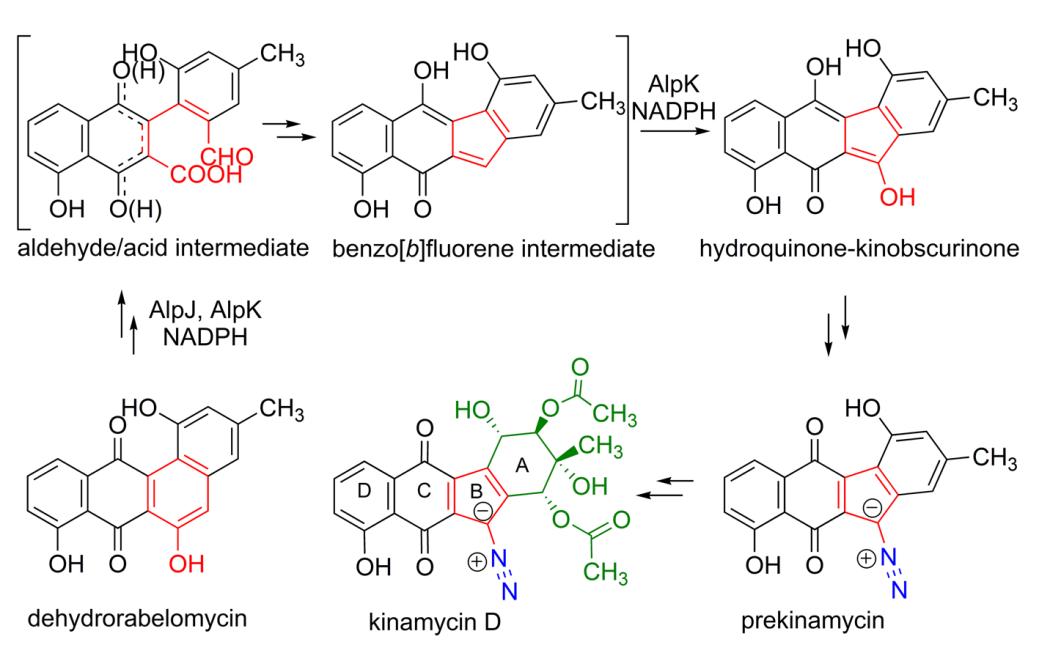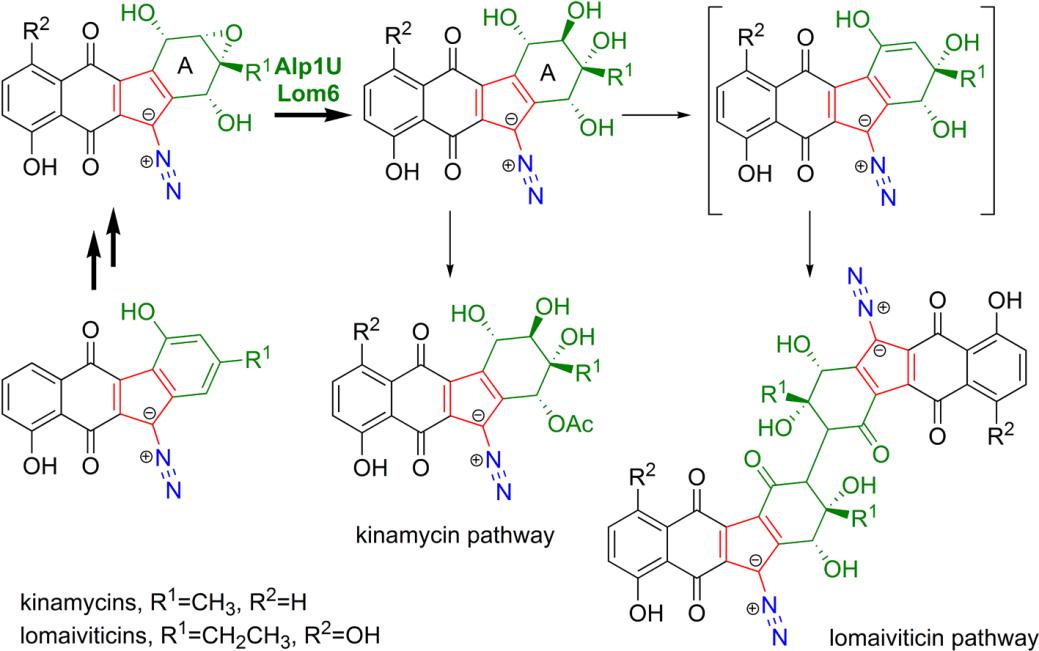Antibiotics of the kinamycin class, including the kinamycins, fluostatins, and lomaiviticins, possess three unique functionalities generated in one assembly line, i.e., the benzofluorene core, the diazo group, and the highly oxygenated A-ring; all three functionalities were reported to be potentially connected to their novel antibiotic and antitumor activities.
The B-ring benzofluorene architecture of the kinamycin class antibiotics was proposed to be derived from an angucycline intermediate after oxidative C-C bond cleavage, however, so far the mechanism and relevant enzymes remain unaddressed. Via detailed genetic and enzymatic analyses, we have uncovered the biosynthetic “black box”—the kinamycin biosynthesis employs two collaborative oxidases, AlpJ and AlpK, for B-ring contraction. Our bioinformatic analysis further demonstrated these conserved pairs of oxidases only exist in the kinamycin class antibiotic biosynthetic gene clusters mentioned above, indicating shared biosynthetic machinery for formation of the benzofluorene skeletons.
However, the highly oxygenated A-rings in the kinamycin class antibiotics appear to reflect their evolutionary divergence, and indeed completely different proposals for their A-ring transformations were reported. After careful inspection of the diverse structures of the kinamycins and fluostatins and extensive bioinformatic analyses, we proposed a unified biosynthetic logic for construction of the oxygen-substituted A-rings, and candidate enzymes. In order to verify our hypothesis in the kinamycin and lomaiviticin pathways, we focused on one key enzyme, the epoxy hydrolase. We finally confirmed the epoxy hydrolases, Alp1U and Lom6, respectively, via detailed genetic and enzymatic analyses. Our results not only confirmed the existence of an epoxy intermediate and the corresponding epoxidase in their biosynthetic pathways but also shed light on the dimerization precursor of the giant pharmacophore lomaiviticin.
The results were published in the Chemical Communications and Nature Communications, respectively.
This work was supported by National Natural Science Foundation of China (Grant 31470176 and 31130001) and Ministry of Science and Technology of China (Grant 2013CB734001).
Relevant papers can be found below,
http://pubs.rsc.org/en/content/articlelanding/2015/cc/c5cc01986a/unauth#!divAbstract
http://www.nature.com/ncomms/2015/150702/ncomms8674/full/ncomms8674.html

Figure 1. The proposed mechanism of B-ring contraction in kinamycin biosynthesis.

Figure 2. The proposed A-ring transformations for kinamycin class antibiotics.
Contact:
Professor Keqian Yang
State Key Laboratory of Microbial Resources, Institute of Microbiology, Chinese Academy of Sciences, 10010, Beijing, China
Email: yangkq@im.ac.cn
Tel: 86-10-64807459
